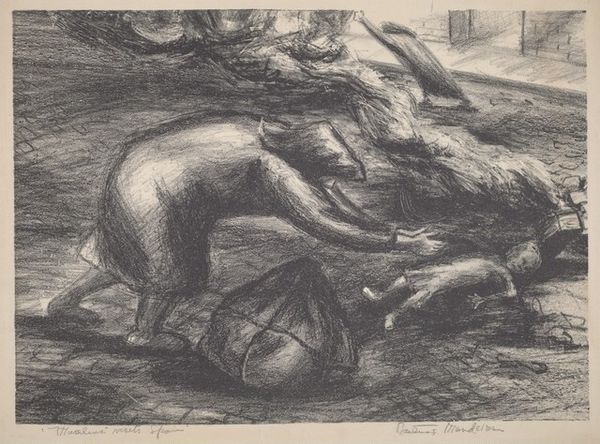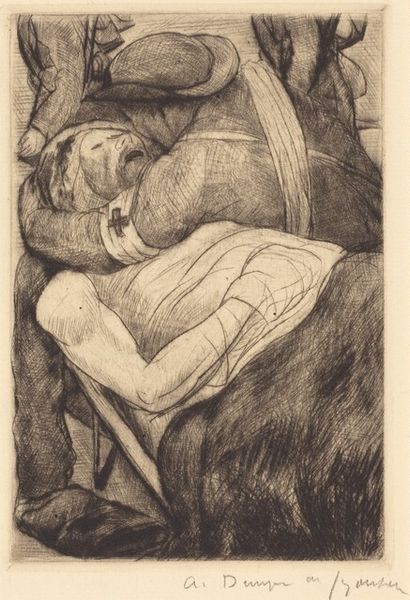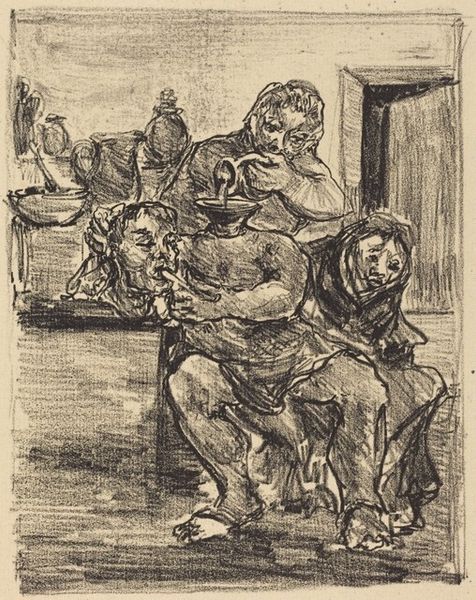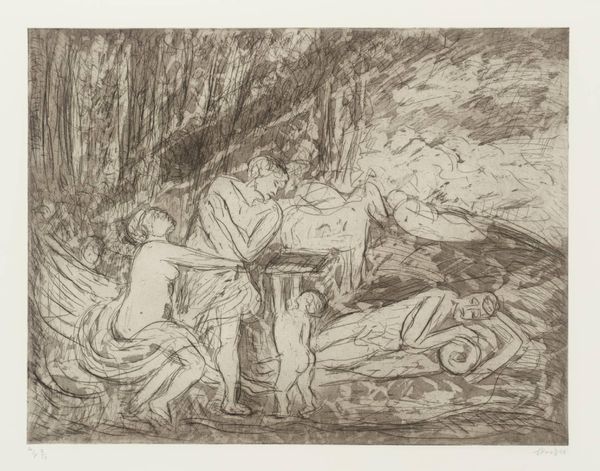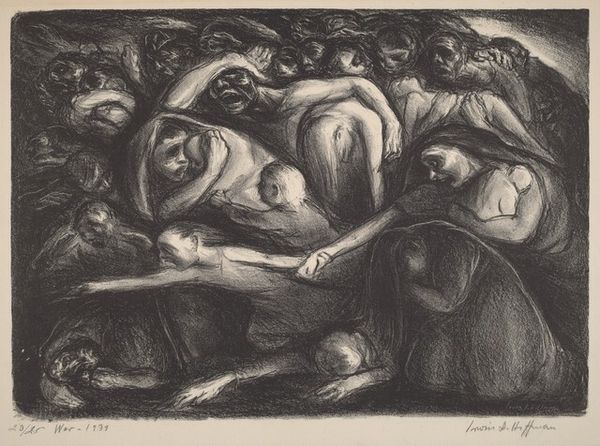
drawing, graphite, charcoal
#
portrait
#
drawing
#
narrative-art
#
pencil sketch
#
figuration
#
expressionism
#
graphite
#
charcoal
#
modernism
Dimensions: overall: 24.5 x 33.2 cm (9 5/8 x 13 1/16 in.)
Copyright: National Gallery of Art: CC0 1.0
Curator: Here we have a drawing by Ernst Barlach titled "Woman Kneeling before a Seated Man." Editor: Immediately, I see the stark contrast of light and dark, creating a somber and heavy atmosphere. The expressive strokes seem almost carved into the paper. I wonder about the texture... is it charcoal and graphite maybe? Curator: Yes, that’s right. It appears to be a work created using both charcoal and graphite on paper. The visible marks add to that sense of weight. The narrative itself is interesting given Barlach’s broader concerns. What's happening socially, politically, that informs these dynamics? Editor: It feels like a study in power, in vulnerability, doesn't it? Look at how the material, the dark, smudged graphite, is used to convey the seated man's bulk and solidity, while the kneeling woman is more lightly rendered. Curator: I see it, yes. But what institutions uphold such dynamics of supplication? Was this commission or for Barlach himself? And where was this exhibited? Was it censored during the Nazi period given Barlach’s troubled relationship with the regime? These are critical questions for the legacy of the artwork itself. Editor: True, and Barlach’s involvement with Expressionism is key here too, with its focus on emotional experience over realism, highlighting that raw sense of anguish or perhaps reverence in her posture. It’s evident in the rough application of materials. Curator: This reminds us that art exists not in isolation. How the work itself exists becomes part of its statement about social order and conformity during a turbulent era. This impacts how we engage with the figures, this interaction between those rendered in charcoal and graphite as well as the viewer themselves. Editor: I see your point. Looking at it again, there’s an immediacy, in that choice of simple materials that is itself very telling. You don’t need elaborate pigments to get to the heart of human interaction and power. Curator: Exactly, and considering it within a social history allows us to perceive beyond the aesthetic—unraveling the ties between cultural production and the intricate societal norms of the time. Editor: Indeed, by digging into process and cultural echoes, the art itself becomes this potent site of investigation.
Comments
No comments
Be the first to comment and join the conversation on the ultimate creative platform.

